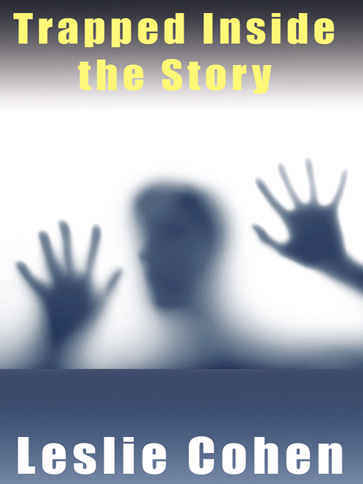Leslie Cohen
 Trapped Inside the Story is so good I predict a bestseller! Written by Leslie Cohen, it is the historical biography of Holocaust survivor Naomi Kalsky, born Sonya Hebenstreit.
Trapped Inside the Story is so good I predict a bestseller! Written by Leslie Cohen, it is the historical biography of Holocaust survivor Naomi Kalsky, born Sonya Hebenstreit.
The biography opens with Sonya Hebenstreit, seven years old, Jewish, living in Poland during the Russian occupation in 1941. Her family, along with the rest of the people of Lvov, Poland, have struggled throughout the 1930s because of the Great Depression. Before the Depression, Sonya’s father, Israel, had owned his own bakery, but now he works for someone else. Then comes the Nazi invasion, and the Russian Communists leave, inviting any of the people to emigrate to Russia. Sonya’s family, unable to afford the cost of relocating, is soon at the mercy of the Nazis, who have now taken over.
Sonya’s story is told in the genre of the fairy tale—and they lived happily ever after, generally—because of the heroine’s love of fairy tales. As a child, she reveled in the stories of the Ukrainian housekeeper, Zoshka; and the heroes of those stories became her friends. Then, she learned to read herself and read all of the fairy tales she could get her hands on.
Sonya is the oldest of three children. She has a younger sister, Rosa, and a baby brother, Emmanuel. First, her father disappears. He was taken by the Germans and made to work. He manages to escape, but when he returns home, he is fatally ill. Next, her mother disappears, having gone to “volunteer” her services now that her husband is too ill. She never returns. Sonya, the oldest, is left now to take care of her father, her younger sister, and her baby brother. Finding food for everyone and milk for the baby becomes the hardest thing for Sonya.
Soon her father dies, and twelve-year-old Sonya, unable to escape her fate, continues to feed and take care of the family she has left. Emmanuel becomes ill, and in spite of herself, she has to leave him in what passes for a clinic in hopes he recovers. She never sees him again. Finally, Rosa disappears in a roundup while Sonya is away searching for food.
Due to her ingenuity, her fairy tale friends, and the non-Jews who help her in spite of the repercussions if discovered, she manages to evade capture by the Germans; and to survive, as she must, she does whatever survival dictates. Dealing on the Black Market and stealing from apartments that have been abandoned by families taken in roundups are the worst until she has to pretend she’s a Gentile, abandoning her faith. Her fairy tale friends, however, assure her she must do what she must to survive. And always, the hope of seeing her mother, her sister Rosa, and her brother Emmanuel again keeps her going.
She likens the occupation of the Germans to a fairy tale, inside which she is trapped, unable to escape, a fairy tale in which the bad guys win; and again the reader witnesses the atrocities the Jews suffer at the hands of the Nazis and at the hands of some of the non-Jews, mostly because they fear the punishment if discovered befriending or otherwise being kind to Jews. Yet, just as in other stories of the Holocaust, there are those who risk their lives to help the Jews, and this, too, adds to the pathos of the biography.
Not since The Diary of Anne Frank or Elie Wiesel’s Night have I been so touched by the memories of the Holocaust. An orphan now, the thing she feared most, having seen in her fairy tales and in school how orphans were treated, Sonya cries: “I’m an orphan—like some of the heroes in fairy tales I’m like a character in a story. It’s as if I’m trapped inside a horror story––a story so strange, so far-fetched, and so nightmarish that it can only be a fairy tale” (114).
Originally, there were 100,000 Jews in Lvov. Along came the Russian occupation. Then, on June 22, 1941, with the news of the German invasion, about 10,000 Jews left Lvov with the Russian army. On June 29, the German army entered Lvov. In July German soldiers and Ukrainian nationalists began to murder Jews on the streets, and by August 3, 4,000 Jews had been murdered. At the end of the war, there were only 600 Jews left, Sonya, fourteen or fifteen years old now, one of them, the only member of her family left.
Book Reviewed by Lee L. Peoples
Published by Level 4 Press, Inc.
13518 Jamul Drive
Jamul, CA 91935
www.level4press.com
ISBN: 978-1-933769-16-5